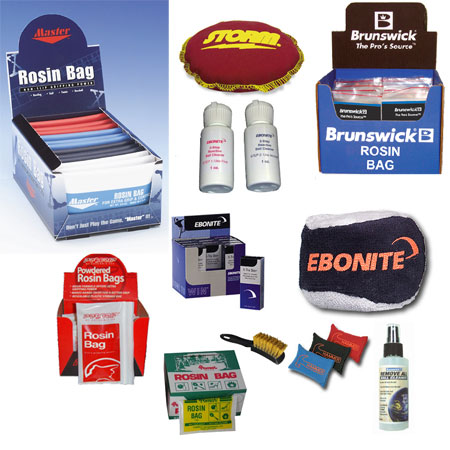HAND-CARE FOR BOWLERS
The condition of the hands is very important especially the hand that grips the bowling ball. Consequently, before bowling this consideration should be strongly addressed. Listed below are hand condition problems that frequently arise.
Most often the normal condition of the bowling hand is too moist for proper execution of the release. Therefore, it should be dried before each shot is made. In most bowling alleys, air blowers are provided for this purpose on each “balls returning machine”.
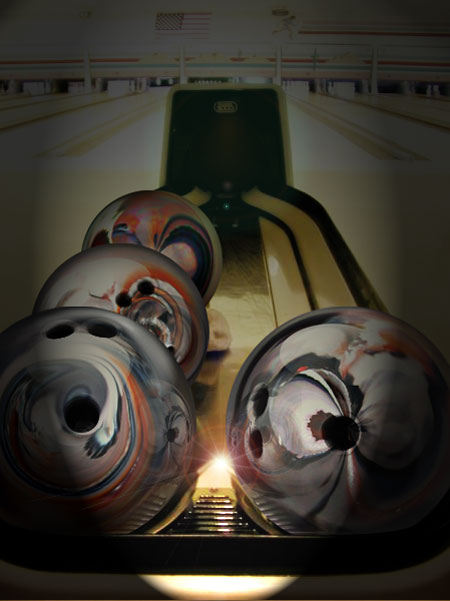
Don’t lay your hand on or over the mouth of the blower. This will reduces the drying capability of the blower.
Bowling Tips : Hold your hand between 3 to 6 inches far away from the mouth of the blower so that you will receive the maximum benefit from the moving air in minimal amount of time. Be sure to hold your hand above the blower with the palm facing. This assures a good quantity of air reaching the thumb, palm and fingers.
Bowling Tips : When a ball slips off your hand, 99% possibility is because of the slippery thumb while not the fingers! If a ball “hangs” on the hand during releasing, was caused by the thumb for not releasing properly. For these reasons, the thumb is the most important part of hand conditioning, followed by the fingers and palm.
After using the blower, wait for about 20 seconds or more before bowling, in order to allow time for moisture to return to the hand.
In a situation where a bowler has dry hands, the bowler can place a large coin in the palm of his bowling hand and close the fingers over it in a fist-like fashion. Holding a coin in this manner for a minute or two will bring moisture over the palm and fingers of the bowling hand. Another option is to hold the hands under warm water. This increases blood circulation and opens the pores of the skin. Another way is to pull a towel through the palm and fingers of the bowling hand. This creates skin surface friction, which will increase blood circulation and will produce moisture build-up on the hand.
It is advisable for a bowler to carry a towel. A towel will absorb excess moisture. It will remove lane oil on the bowling ball, remove other unwanted substances that the ball may have picked up, which may transferred to your bowling hand. Besides, it can be used to warm the hands when they are cold too. Be sure to wash your towel after two or three bowling sets. Neglecting to do so will allow too much oil film and dirt to accumulate on it, thus making it harmful to your hand performances.
Blisters will occur on the bowling hand for the following reasons :
- A tightly fitted holes of the bowling ball
- A poorly fitted hole’s measurements of the bowling ball
- A natural swelling of the thumb and fingers
- An improper release of the ball
When calluses do occur, a bowler must give them constant attention. A nail clipper is also used at times to reduce them to more modest proportions.
The most common “problem areas” of the thumb are found on the web-look fingerprint area and on the backside around the thumb knuckle. A huge and discomforting callus at the web-look fingerprint area of the thumb is usually caused by either of too much “forward pitch” in the thumbhole or not enough of thumbhole bevel or both. A callus on the backside of the thumb knuckle is usually indicates that either you have too much “forward pitch” in the thumb or you are forcing the thumb for more bending, in order to better grip the ball. Inserting one or two pieces of tape often resolves the latter problem.
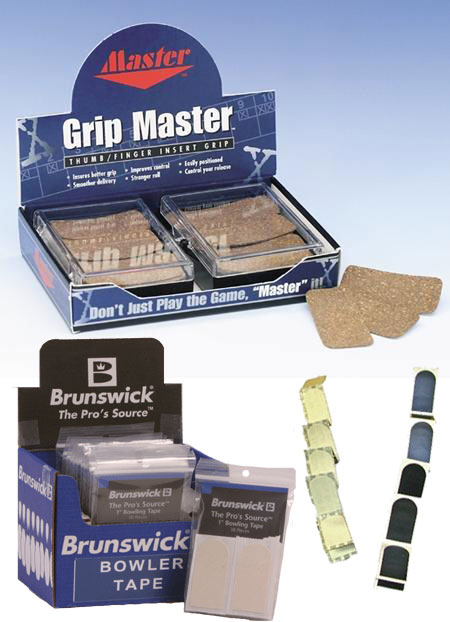
Bowling Tips : Using thumb-insert will reduce the occurrence of this blister and calluses problem.
Calluses on the bowling fingers are most common along the lines of insertion due to relatively tight holes or extreme forward pitch. In addition, calluses can develop on the tip of the index finger and on the upper right side of the palm (for right-handers) when the weight of the bowling ball is positioned there.
Just because a ball is properly fitted does not mean the holes are going to provide an excellent grip each and every time. Sustaining an ideal grip is an ongoing problem that a bowler must frequently resolve if he or she hopes to maintain a good gripping feel of the ball.
Bowling Tips : Using finger-insert will reduce the occurrence of this blister and calluses problem.
As the size of the fingers and thumb vary due to weather, blood pressure and other external factors; tape and inserts can be strategically applied or removed to accommodate your current state of condition. Many experienced bowlers choose to drill and bevel the thumbhole to avoid most unusual swelling. For right-handers, tape/inserts can then be applied to the front-right side of the thumbhole or to the back-left side of the thumbhole and vice versa for left-handers. Tape and inserts are usually made from cork or rubber.

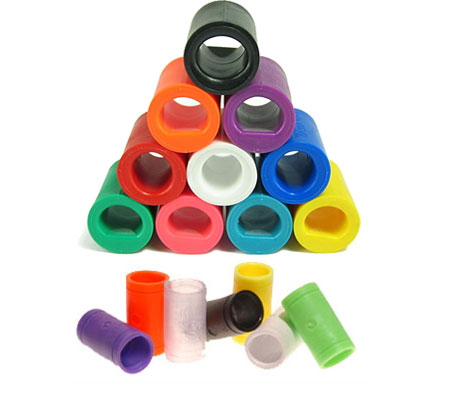
When seeking to secure a better grip, you should not overlook for finger-grips and thumb-slug/thumb-solid. These cylindrical-shaped inserts have revolutionized the ball grip. Made of rubber or silicone, they provide the bowler with a much better grip of the ball, because the fingers and thumb works far more effectively to these inserts than the composition of the ball itself. I have seen bowling averages jump as much as twenty pins as a result of their use.
However, they do have some drawbacks. First, because some are very soft, and therefore, you must guard against the fingers staying for too long in the ball to avoid over-lifting during releasing. Second, because the thumb must clear smoothly and quickly, too often a thumb-insert will occasionally delay the thumb from coming out of the thumbhole during releasing.
Bowling Tips : Inserts/Tape should be changed periodically because they do tend to wear and turn brittle.
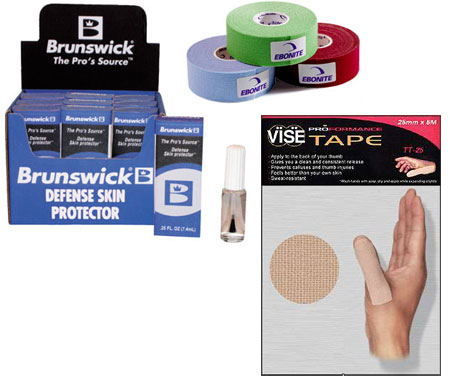
When blistering occurs, it is advised to apply with a predesigned patch or cotton dressing. These products provide a strong protective layer for the injured area, enabling a bowler to perform as if the hand were normal. When removing this dressing, make sure you soak it in warm water for several minutes or else it often caused tearing away of your tender skin along with the artificial layering.
Just like other sports; bowlers are most likely to form blisters when first taking up the game or when returning to it after a long break. Using a patch as your prevention is a good idea whenever one suspects the probability of blistering occurring.
One additional note concerning the condition of the hands involves the fingernails; if not kept short they will negatively affect the release.
Bowling Tips : Most bowlers carry a kit which includes a towel, a wire brush for the shoe-soles, a nail clipper, some sandpapers for thumbholes, a bottle of solution to remove oil and dirt on bowling ball, a rosin bag for hand moisturizing, some corks & inserts & tapes and a pair of scissor.
